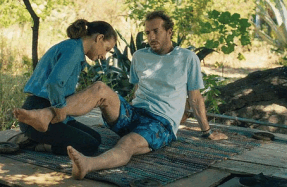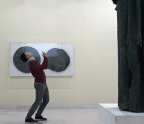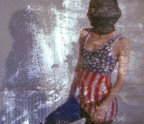
“Who? What? Where? When?” reads one of the advertisements for Louis Feuillade’s 1915 serial Les vampires. Above these words, a question mark cradles the masked head of one Irma Vep (incarnated onscreen by the legendary music-hall performer Musidora), with only her twinkling eyes in view, pulling us deeper into her mystery. Decades later, in Olivier Assayas’ Irma Vep (1996), Maggie Cheung—playing an alternate-universe version of herself who is summoned to Paris to play Irma Vep in a flashy, internationally co-produced remake of Les vampires—dons a mystique-conferring catsuit to re-embody Musidora’s criminal mastermind, only to be ultimately fired from the role when the production collapses. Yet even as this first iteration of Irma Vep suggests that the cinema of today lacks the spark to create a comparably seductive spectacle, it also achieves a sense of wonder and fascination from the presence of Cheung: an outsider perched atop Parisian rooftops, a woman in crisis who attains a kind of self-knowledge through the role’s requisite self-abandon. Cheung proves that Irma Vep is not merely a character one plays, but a spirit one inhabits like a fever dream.
Assayas’ latest effort, an eight-part HBO remake of his masterpiece about a failed remake, performs a similar resurrection—after all, it was only a matter of who, what, where, when Irma Vep would rise again. In the new Irma Vep, the events of the 1996 film are restaged and readjusted for the streaming era, the world of superhero movie franchises, iPhones, and prestige television. Standing in for the parafictional Cheung is Mira (Alicia Vikander), a hyper-professional American movie star whose claim to fame are her Marvel-esque Doomsday movies, gigs she’s not exactly proud of. Hoping to artistically distance herself from her blockbuster meal ticket, Mira heads to Paris to star as Irma Vep in a series-length remake of Les vampires that is being directed by the eccentric (and wildly unstable) René Vidal (Vincent Macaigne, replacing Jean-Pierre Léaud from the original film).
Invoking not only his original but also the “making-of” touchstones of Truffaut’s (1973) and Fassbinder’s (1971), Assayas here summons a similar kind of film set-within-the-film intrigue that, this time, is informed by contemporary discourses around issues of consent, onscreen sensuality, and narrative intent. For example, Edmond (Vincent Lacoste), the actor playing the putative hero of , constantly quarrels with René about the motivations of his character: woefully (if hilariously) oblivious to the project’s deliberate obliqueness and emphasis on atmosphere, he is unaware that his protagonist is to be impotent and






